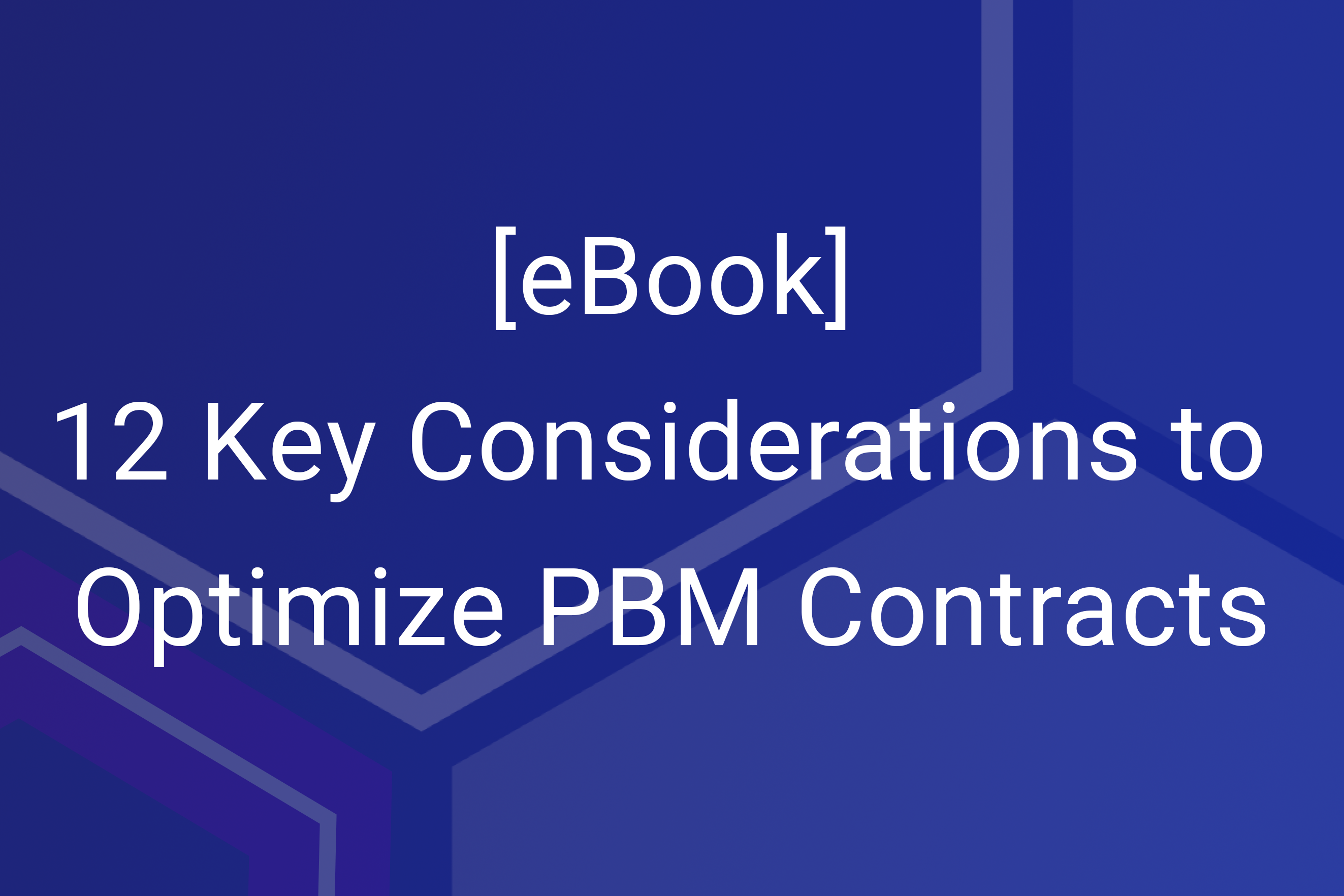Prescription drug spend represents a significant portion of overall healthcare expenditures for employers. However, pharmacy is one of the only areas of employee benefits that can be negotiated on a per-unit cost basis. This means the pharmacy benefits contract represents a major opportunity to impact the overall financial health of an employee benefits program.
Ultimately, when plan sponsors optimize their pharmacy benefits contract they can not only better control costs but also manage medication access for members.
While a pharmacy benefits contract is a powerful lever for managing spend, it is also very complicated, with several variables that are impacted in real-time by market and industry dynamics. Thus, in order to maximize savings, it is critical to understand and actively manage your PBM contract, that is, the contract between your organization and your pharmacy benefits manager.
What elements of a pharmacy benefits contract are important?
In a recent Truveris webinar on PBM contracts, our team covered strategies for successfully managing a PBM contract. The conversation focused on a few specific elements that are constantly evolving and that add a particular degree of variability to how a contract performs throughout its lifecycle.
Specifically, the session discussed how:
1. Definitions set clear expectations for performance
Definitions seem straightforward, but can cause confusion – and potentially impact the program financially – during a contract term if the parties disagree on interpretation. The best practice is to clearly define as many terms as possible so expectations are agreed upon.
2. Financial guarantees can serve as a barometer for plan optimization
Financial guarantees set the unit drug cost for all claims made on the plan. Therefore, having clear and aggressive financial guarantees in a contract can help plan sponsors extract value from their contract throughout the life of the agreement.
In a poll of brokers and plan sponsors conducted during the webinar, Truveris found that more than 50% of respondents consider financial guarantees to be top-of-mind as they negotiate their pharmacy benefits contract.
3. Drug exclusions are often overlooked
Understanding what drugs or categories or drugs are excluded from a PBM contract is imperative and something that many plan sponsors can easily overlook when reviewing a proposed contract.
If an excluded drug or category has – or is expected to have – significant utilization and is unaccounted for, this could have a major financial strain on both the employee and the plan sponsor.
4. Lists are opaque, but changes can be anticipated and managed
Lists can be very opaque, and not knowing what lists are in place and how they are defined can create a blind spot in a pharmacy benefits plan. Different lists can impact multiple areas of the contract – including drug adjudication, pricing, and even member access.
To maintain control, in addition to knowing what lists are in place, plan sponsors must understand how and when lists are applied, how they are managed, and ensure they are notified when changes occur. Ultimately, the way a given list is utilized can have financial implications – financial, operational, and/or clinical – for the plan and the member.
These elements all work in concert to determine the relative success and value of a PBM contract. Each element requires attention as well as market expertise – both individually and with respect to each other – and should fit the unique context of the individual plan and member needs.
How to Manage Your Contract Throughout the Pharmacy Benefits Lifecycle
In Truveris’ webinar focused on PBM contracts, we discussed real-life scenarios and key strategies for addressing some of these elements as they may apply throughout the life of a contract.
There are many tactics available to maximize savings and protect a plan sponsor’s downside. Importantly, these strategies go beyond the time of procurement – they often can be leveraged mid-contract, as seen below:
- Procurement: Getting strong definitions, understanding the lists, and conducting negotiation based on your plan’s unique utilization is a great start.
- Oversight: A pharmacy benefits contract is a living and breathing thing. Oversight is imperative to make sure that your contract is delivering as expected.
- Optimization: Leveraging data on an ongoing basis helps plan sponsors understand potential contract improvements to optimize contract value.
For example, did you know many contracts include a “market check,” which allows plans to explore more competitive discounts based on shifts in the market?
Overall, plan sponsors should ensure that their approach includes leveraging claims data to inform decisions, partnering with an objective third party to ensure performance, and recognizing that pharmacy benefits contracts require ongoing attention.
To access the examples and details of the session, watch the Q&A, and learn more about how to oversee a successful PBM contract, watch the recording from our live event, “Strategies for Maximizing Your Pharmacy Benefits Contract.”









